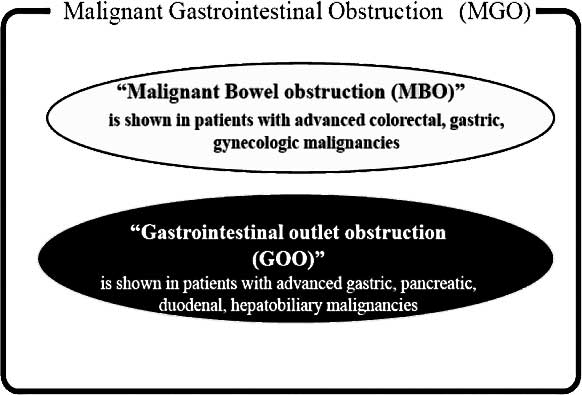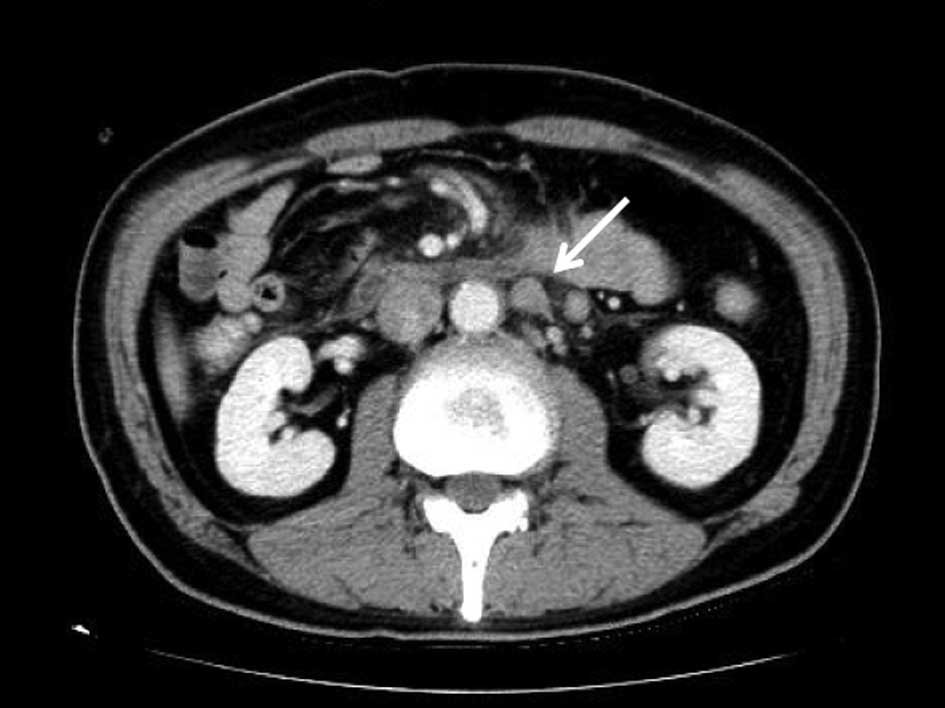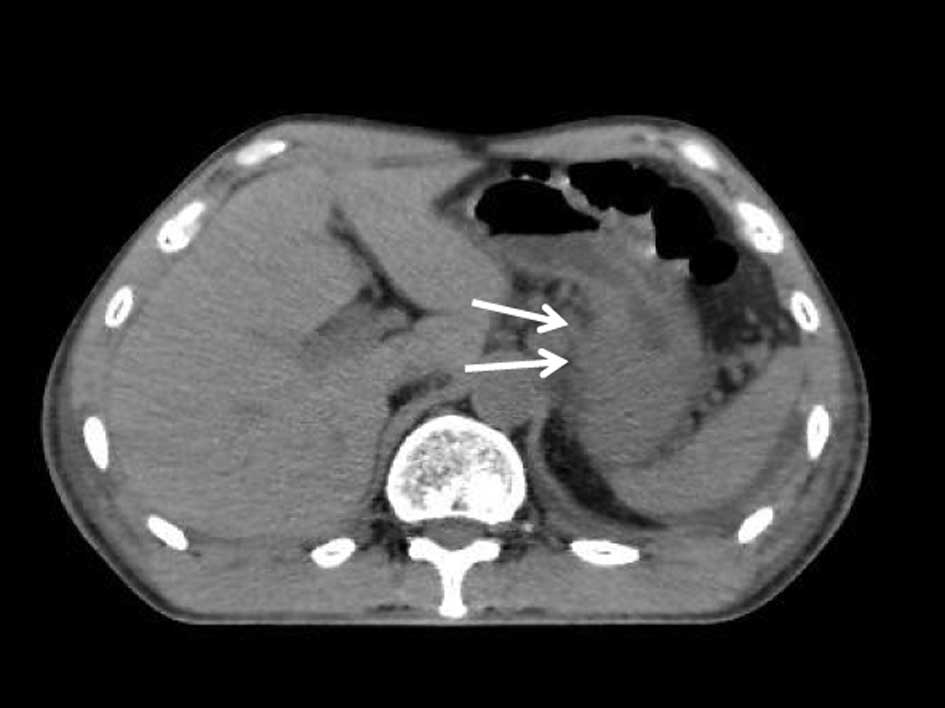|
1
|
Mercadante S, Ferrera P, Villari P, et al:
Aggressive pharmacological treatment for reversing malignant bowel
obstruction. J Pain Symptom Manage. 28:412–416. 2004. View Article : Google Scholar : PubMed/NCBI
|
|
2
|
Dean A: The palliative effects of
octreotide in cancer patients. Chemotherapy. 47(Suppl 2): 54–61.
2001. View Article : Google Scholar
|
|
3
|
Khoo D, Hall E, Motson R, et al:
Palliation of malignant intestinal obstruction using octreotide.
Eur J Cancer. 30A:28–30. 1994. View Article : Google Scholar : PubMed/NCBI
|
|
4
|
Watanabe H, Inoue Y, Uchida K, et al:
Octreotide improved the quality of life in a child with malignant
bowel obstruction caused by peritoneal dissemination of colon
cancer. J Pediatr Surg. 42:259–260. 2007. View Article : Google Scholar : PubMed/NCBI
|
|
5
|
Shima Y, Ohtsu A, Shirao K, et al:
Clinical efficacy and safety of octreotide (SMS201-995) in
terminally ill Japanese cancer patients with malignant bowel
obstruction. Jpn J Clin Oncol. 38:354–359. 2008. View Article : Google Scholar : PubMed/NCBI
|
|
6
|
Mercadante S, Spoldi E, Caraceni A,
Maddaloni S and Simonetti M: Octreotide in relieving
gastrointestinal symptoms due to bowel obstruction. Palliat Med.
7:295–299. 1993.PubMed/NCBI
|
|
7
|
Marie TF: The physiology of somatostatin
and its synthetic analogue, octreotide. Eur J Palliative Care.
1:20–22. 1994.
|
|
8
|
Sugimachi K, Maehara Y, Horikoshi N, et
al: An early phase II study of oral S-1, a newly developed
5-fluorouracil derivative for advanced and recurrent
gastrointestinal cancers. The S-1 Gastrointestinal Cancer Study
Group. Oncology. 57:202–210. 1999. View Article : Google Scholar
|
|
9
|
Koizumi W, Kurihara M, Nakano S and
Hasegawa K: Phase II study of S-1, a novel oral derivative of
5-fluorouracil, in advanced gastric cancer. For the S-1 Cooperative
Gastric Cancer Study Group. Oncology. 58:191–197. 2000. View Article : Google Scholar : PubMed/NCBI
|
|
10
|
Sakuramoto S, Sasako M, Yamaguchi T, et
al: Adjuvant chemotherapy for gastric cancer with S-1, an oral
fluoropyrimidine. N Eng J Med. 357:1810–1820. 2007. View Article : Google Scholar : PubMed/NCBI
|
|
11
|
Boku N, Yamamoto S, Fukuda H, et al:
Fluorouracil versus combination of irinotecan plus cisplatin versus
S-1 in metastatic gastric cancer: a randomized phase 3 study.
Lancet Oncol. 10:1063–1069. 2009. View Article : Google Scholar : PubMed/NCBI
|
|
12
|
Kumagai K, Saikawa Y, Fukuda K, et al:
Octreotide acetate successfully treated a bowel obstruction caused
by peritoneally disseminated gastric cancer, thereby enabling the
subsequent use of oral S-1 chemotherapy. Int J Clin Oncol.
14:372–375. 2009. View Article : Google Scholar
|
|
13
|
Japanese Research Society for Gastric
Cancer. Japanese Classification of Gastric Carcinoma. 2nd English
edition. Kanehara; Tokyo: 1998
|
|
14
|
Ripamonti C, Twycross R, Baines M, et al:
Clinical-practice recommendations for the management of bowel
obstruction in patients with end-stage cancer. Support Care Cancer.
9:223–233. 2001. View Article : Google Scholar : PubMed/NCBI
|
|
15
|
Mulvihill SJ, Pappas TN, Fonkalsrud EW and
Debas HT: The effect of somatostatin on experimental intestinal
obstruction. Ann Surg. 207:169–173. 1998. View Article : Google Scholar : PubMed/NCBI
|
|
16
|
Saikawa Y, Kubota T, Kitajima M, et al:
Preoperative combination chemotherapy with S-1 and low-dose
cisplatin against highly advanced gastric carcinoma. Oncol Rep.
10:381–386. 2003.PubMed/NCBI
|
|
17
|
Koizumi W, Tanabe S, Saigenji K, et al:
Phase I/II study of S-1 combined with cisplatin in patients with
advanced gastric cancer. Br J Cancer. 89:2207–2212. 2003.
View Article : Google Scholar : PubMed/NCBI
|
|
18
|
Koizumi W, Narahara H, Hara T, et al: S-1
plus cisplatin versus S-1 alone for first-line treatment of
advanced gastric cancer (SPIRITS trial): a phase III trial. Lancet
Oncol. 9:215–221. 2008. View Article : Google Scholar : PubMed/NCBI
|
|
19
|
Takahashi T, Saikawa Y, Kitajima M, et al:
Histological complete response in a case of advanced gastric cancer
treated by chemotherapy with S-1 plus low-dose cisplatin and
radiation. Jpn J Clin Oncol. 33:584–588. 2003. View Article : Google Scholar : PubMed/NCBI
|
|
20
|
Saikawa Y, Kubota T, Kitajima M, et al: Is
chemoradiation effective or harmful for stage IV gastric cancer
patients? Oncol Rep. 13:865–870. 2005.PubMed/NCBI
|
|
21
|
Saikawa Y, Kubota T, Kumagai K, et al:
Phase II study of chemoradiotherapy with S-1 and low-dose cisplatin
for inoperable advanced gastric cancer. Int J Radiat Oncol Biol
Phys. 71:173–179. 2008. View Article : Google Scholar : PubMed/NCBI
|












